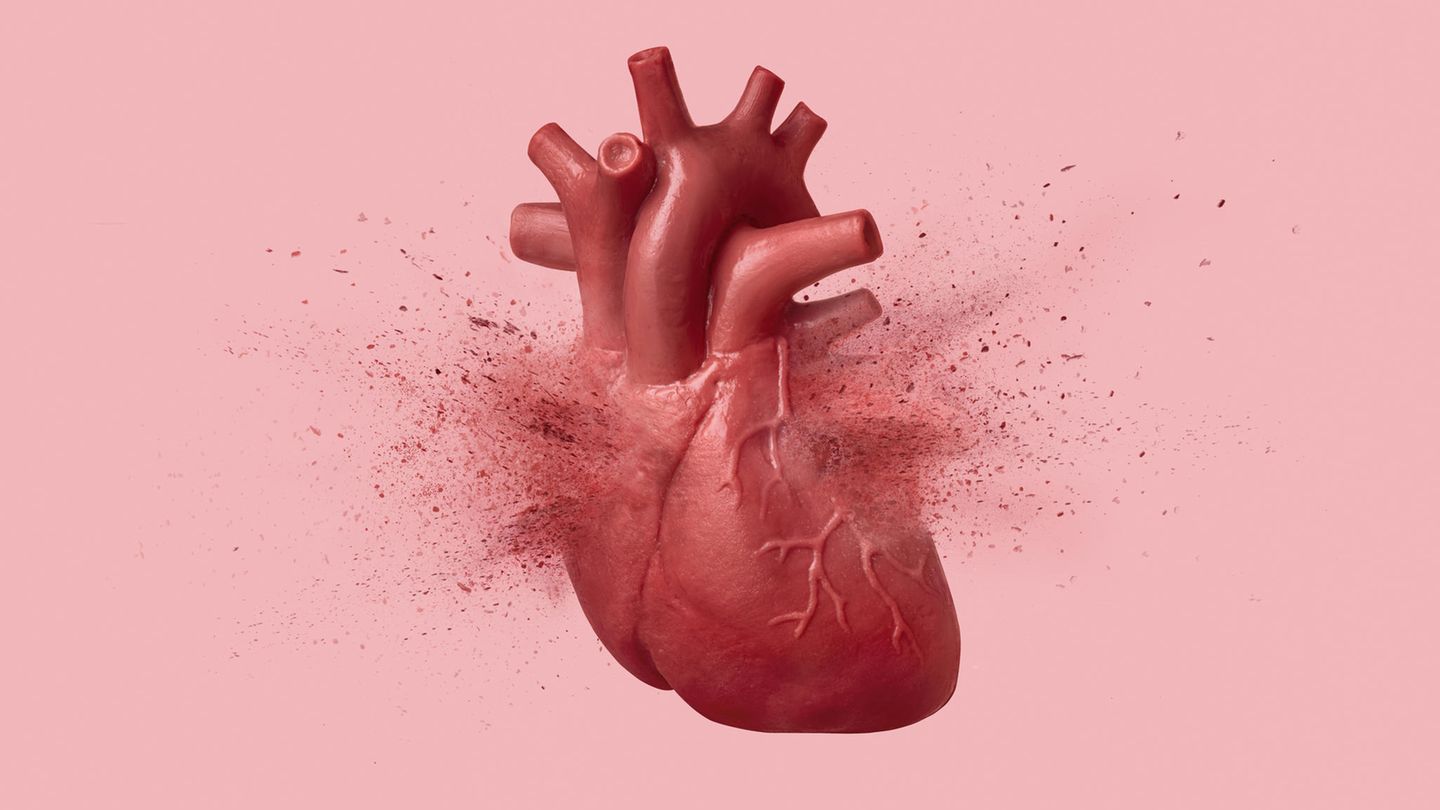Not only lovesickness, but also other emotional or physical states of emergency can become too much for the heart. It “breaks”. There is no metaphor behind this, but a life-threatening disease: Broken Heart Syndrome.
The heart is probably the most romanticized organ that man calls his own. If you are in love, you give it away to someone else. If you get a basket, it can slip into your pants. And it can break anyway. The latter not only metaphorically. Broken heart syndrome even has its own medical term: Takotsubo cardiomyopathy. But what really happens to the heart when it “breaks”?
Ilan Wittstein is an assistant professor of medicine at Johns Hopkins Medicine in Baltimore and a pioneer in the broken heart field. One of the first scientific papers on the syndrome came from him. It was in 1998, when Wittstein was still a young senior physician, when he was confronted several times within a short period of time with patients whose hearts had an unusual shape.
“Broken Heart Syndrome” not only in lovesickness
“I saw three patients in a row, all of whom had experienced some type of emotionally distressing event,” the doctor told CNN. One was the death of her mother, another was involved in a horrific car accident, and the third was struggling with a surprise reunion. But all three cases had something in common. They all came to the hospital with “very similar echocardiography results.” The ultrasound examination, also known as a heart echo, is one of the routine examinations of the heart.
Accordingly, the images would have shown that the main pumping chamber, i.e. the left ventricle, had inflated to a strange shape. Japanese physicians made a similar observation back in 1990. Because what they saw reminded them of a takotsubo, which is a pot used by Japanese fishermen to catch squid, the syndrome was named Takotsubo cardiomyopathy. When Wittstein discovered this form in the ultrasound images of his patients years later, the disease was still hardly known in the USA, he says, and was therefore probably often misunderstood.
The heart “breaks” in exceptional situations
Because the symptoms of stress cardiomyopathy, as the syndrome is also known, are similar to those of a heart attack: chest pain, shortness of breath, sweating. However, there are indications that make the differences between myocardial infarction and Takotsubo cardiomyopathy visible. Because while clogged arteries often cause infarctions, these were “flawless” in Wittstein’s patients. There was no sign of cholesterol or plaque. In addition, the hearts of the women would have regenerated within days to weeks. Permanent damage to the heart muscle, as is the case after heart attacks, was not observed.
Much is still unclear in relation to the syndrome. As a rule, however, exceptional emotional or physical situations are assumed to be the cause. Women in the menopause are particularly affected. In addition, a team of scientists led by cardiologist Ingo Eitel from the University Heart Center in Lübeck found evidence in a study that genetic factors could play a role and increase the likelihood of developing the syndrome. About two percent of all cases that are initially classified as a heart attack later turn out to be cases of broken heart syndrome. And: the sudden loss of function of the heart can be just as life-threatening as a heart attack.
Wittstein and his team set about investigating the unusual behavior of the heart and examining the phenomenon in more detail. In 2005, the research team published the first of two papers on the subject. “We gave the syndrome the nickname ‘broken heart syndrome’ because nobody in medicine believed at the time that emotions could have such a dramatic impact on the human heart. We wanted to raise awareness of this,” says Wittstein.
Source: , ,, ,
Also read:
– Why women grow dark chest hair too
–
–
–
Source: Stern




